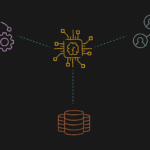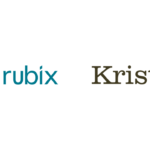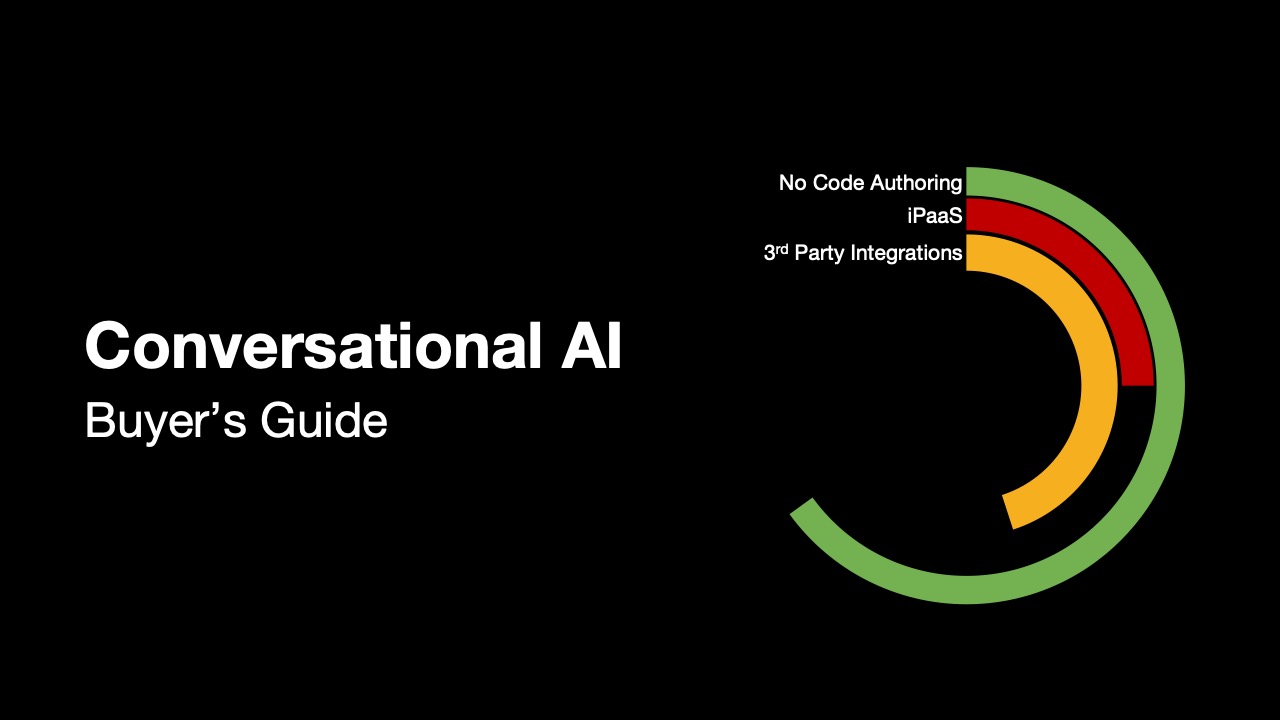We are in an age in which computers are learning how to do more complex things than humans are able to program. The line between humans and machines is becoming more blurred as machines are doing things that were recently thought impossible. Here are some astonishing examples of machine learning in action.
But before we get into the examples, let’s first define what machine learning is.
What Is Machine Learning?
In straightforward terms, machine learning is a tool in the software engineering toolkit used to teach computers to do things they haven’t been explicitly programmed to do.
Machine learning (ML) is based on algorithms that use advanced math to find complex patterns in historical data and then create models (mini computer programs) that make predictions using new data. The predictions made by the machine learning models can get better over time if they are exposed to more data to learn from.
Machine learning is an enabling technology for artificial intelligence (AI). Artificial intelligence can be thought of as machine learning running autonomously with an automated ability to continue to learn from new data.
Machine learning has come to play an integral part in many recent advancements within computer science. ML is being used more and more every day without realizing it. From image recognition and text translation to weather forecasts and product recommendations, machine learners are making it possible for us all to learn more about our environment and ourselves through advanced data analysis.
Some of the most popular machine learning algorithms include:
- Decision trees for predicting numbers (regression) and identifying what something is (classification), trained with shallow learning algorithms like RandomForest and GradientBoost
- Neural networks for reading language, analyzing video, and creating art, trained with deep learning algorithms that compose many node layers
Now that we have a basic understanding of machine learning let’s look at some specific machine learning models and enterprise examples.
11 Machine Learning Examples
Cognitive Issue Resolution (CIR)
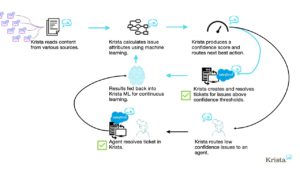 Cognitive Issue Resolution uses natural language processing and machine learning models to read, reply, and resolve email queries and issues sent to your company. Using machine learning models to read and reply to customers and employees automatically saves time and labor costs for your customer service, finance, sales, and human resource teams by reading and automatically answering questions and providing a self-service model to customers.
Cognitive Issue Resolution uses natural language processing and machine learning models to read, reply, and resolve email queries and issues sent to your company. Using machine learning models to read and reply to customers and employees automatically saves time and labor costs for your customer service, finance, sales, and human resource teams by reading and automatically answering questions and providing a self-service model to customers.
CIR connects with your email, internal apps, data sources, ticketing systems, and other AI to reply to customers and employees. Once connected, intelligent automation platforms like Krista extract attributes from incoming email messages using proprietary machine learning models and natural language processing (NLP). These attributes help determine the next best action and initiate automated workflows based on identified attributes.
One enterprise saves over $2M annually by automating email responses to customers, partners, and employees. This wholesale distributor receives an average of 25,000 monthly inquiries to 75 different email addresses covering various customer service, billing, and delivery topics. The company now automatically replies to 85% of emails after using a single month of emails for initial training data.
Intelligent Document Processing (IDP)
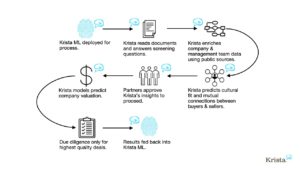 Intelligent Document Processing extracts data from documents using machine learning and NLP. The extracted data or “entities” can then be used to automate tasks such as anomaly detection, data entry, invoice processing, and contract management.
Intelligent Document Processing extracts data from documents using machine learning and NLP. The extracted data or “entities” can then be used to automate tasks such as anomaly detection, data entry, invoice processing, and contract management.
Machine learning algorithms are trained on a set of sample documents to learn how to extract data from similar documents. The data can then be used to populate databases, spreadsheets, other software applications, or in Krista’s case, complete business outcomes.
One example of intelligent document processing is automatic invoice processing. This involves extracting data from invoices such as the invoice number, cost of each line item, total amount due, and payment due date. The extracted data can then be used to automatically populate accounting software applications or identify anomalies based on historical data. IDP accelerates literacy from human speed to machine speed, saving time and reducing errors associated with manual data entry.
Revenue Ops (RevOps)
Revenue Ops is the application of machine learning to sales and marketing data to improve customer acquisition, conversion, and retention. Machine learning can be used to identify trends in customer behavior, predict which prospects are most likely to convert, and recommend the best next action for sales and marketing teams.
Revenue Ops solutions use machine learning to ingest data from multiple sources, including CRM, marketing automation, email, web analytics, and social media. The data is then cleansed and normalized using proprietary algorithms. Machine learning models are then trained to provide insights that help improve sales and marketing performance.
Cybersecurity Operations
Security orchestration, automation, and response (SOAR) platforms seek to streamline and improve an organization’s security operations. Some common machine learning examples for security operations include incident detection, classification, investigation, and response.
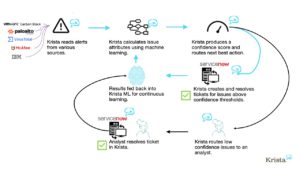 Machine learning can be used to automatically evaluate alerts by analyzing input data from multiple sources, including network traffic, system logs, and user activity. Once an ML model classifies an alert as a real incident, another machine learning model is then used to determine the best course of action. Machine learning can also be used to investigate incidents by identifying patterns in data that may indicate malicious activity. Finally, ML can be used to respond to incidents by automatically executing pre-defined actions or recommending actions.
Machine learning can be used to automatically evaluate alerts by analyzing input data from multiple sources, including network traffic, system logs, and user activity. Once an ML model classifies an alert as a real incident, another machine learning model is then used to determine the best course of action. Machine learning can also be used to investigate incidents by identifying patterns in data that may indicate malicious activity. Finally, ML can be used to respond to incidents by automatically executing pre-defined actions or recommending actions.
Krista’s security orchestration, automation, and response (SOAR) solutions combine incident response, orchestration and automation, and threat intelligence (TI) management capabilities. Krista’s natural language processing helps security professionals run playbooks, workflows, and processes in easy-to-follow conversational formats. Krista’s conversations and automated workflows keep security analysts, operators, employees, and customers informed with the latest available information.
Governance Risk and Compliance (GRC)
GRC platforms provide an integrated suite for managing risk and compliance requirements. They help companies effectively manage their IT security risks and reduce costs while meeting industry regulations like GDPR or PCI-DSS.
Managing risk and compliance amongst hundreds or thousands of applications, cloud connections, employees, and the data each holds is challenging. First, there is simply too much data on too many devices. Secondly, these devices, apps, and the data constantly change.
Companies implement risk management procedures and systems to limit risk and exposure and comply with industry or government regulations. GRC platforms help companies build, execute, and monitor workflows across teams and IT systems. Platforms like Krista help automate these processes and help simplify workflows in a centralized system. Managing procedural and business workflows in an automation platform documents which employees or systems completed the steps for auditing or reporting purposes. Advanced platforms provide executive dashboards measuring key performance indicators relevant to risk exposure and compliance requirements.
Contact Center and Omni-Channel Customer Support
Many digital transformation projects seek to either enhance customer experiences or employee experiences. Overhauling the contact center is one of the best transformation projects and machine learning examples.
 Contact center jobs are more complex than they need to be. Contact centers need to simplify workflows to improve customer and employee experiences. Companies that have grown by acquisition or not properly streamlined the contact center workflow often force too many apps and screens onto contact center employees. Too many apps cause long call times and frustrate both the customer and the employee.
Contact center jobs are more complex than they need to be. Contact centers need to simplify workflows to improve customer and employee experiences. Companies that have grown by acquisition or not properly streamlined the contact center workflow often force too many apps and screens onto contact center employees. Too many apps cause long call times and frustrate both the customer and the employee.
Machine learning can enhance the contact center by automating simple tasks and workflows. Machine learning provides employees with the next best action based on customer interactions in other channels. This makes customers feel important and increases lifetime value. Machine learning also predicts customer behavior and recommends actions that will improve customer satisfaction.
Krista reduces customer call center complexity by consolidating screens into easy-to-follow conversations. Simplifying processes with Krista minimizes agent call handling time and reduces agent training and retraining time. Automating contact center processes with Krista automatically builds and continually trains machine learning models using data from your agents and systems.
Contact Center – Self-Service Chatbot
Self-service chatbots are a type of artificial intelligence that can interact with humans to perform tasks or answer questions. Businesses use chatbots to provide fast and accurate answers to common questions.
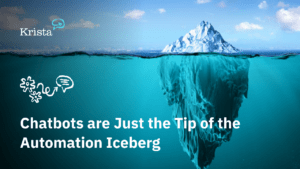 Chatbots are beneficial because they can help reduce the need for human customer service agents. They can also help improve customer satisfaction by providing quick and accurate answers to common questions. However, not all chatbots use machine learning. Most chatbots contain hard-coded answers to simple questions or read from an article knowledge base. Advanced chatbots like Krista use machine learning and conversational AI to provide contextual responses to customers and employees based on data lookups.
Chatbots are beneficial because they can help reduce the need for human customer service agents. They can also help improve customer satisfaction by providing quick and accurate answers to common questions. However, not all chatbots use machine learning. Most chatbots contain hard-coded answers to simple questions or read from an article knowledge base. Advanced chatbots like Krista use machine learning and conversational AI to provide contextual responses to customers and employees based on data lookups.
Predictive analytics
Whether it’s banking, retail, or manufacturing, predictive analytics helps companies make better decisions.
Predictive analytics is the branch of advanced analytics dealing with predicting future events based on historical data and analytics techniques such as statistical modeling, machine learning, and data mining. Predictive analytics helps to identify trends, make recommendations, and even automate decision-making.
Predictive analytics is used in a wide variety of businesses, including finance and retail. In finance, predictive analytics identifies trends and makes recommendations for investments. Predictive analytics can identify patterns that indicate fraud by looking at past data. This allows financial organizations to take steps to prevent fraud before it happens.
In retail, predictive analytics identifies patterns that indicate customer behavior. This helps retail organizations make decisions about inventory, pricing, and promotions. Predictive analytics can also be used to recommend products to customers based on their past behavior.
Personalized Customer Recommendations on E-Commerce Stores
E-commerce stores use machine learning to make personalized recommendations to their customers. Machine learning algorithms analyze customer data to understand customer preferences and predict future behavior. This allows ecommerce sites to recommend products that are more likely to be of interest to individual customers.
The largest eCommerce store is Amazon. Amazon uses machine learning to make product recommendations to customers based on their past behavior. Amazon.com also uses machine learning to target ads to individual customers. Machine learning algorithms personalize your offers on eCommerce stores and account for over 35% of Amazon’s revenue.
These machine learning algorithms are constantly learning from your behavior. They consider things like the products you have viewed, the products you have added to your cart, the products you have purchased, and the buying patterns of other “similar” people.
Learning from you and people like you allows Amazon to understand your interests better and provide more relevant recommendations.
Self-Driving Cars and Automated Transportation Systems
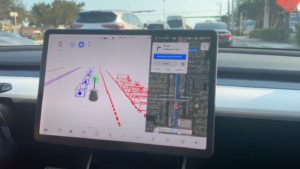 Self-driving cars use machine learning to navigate routes and avoid obstacles. Machine learning algorithms map out the environment and identify barriers, people, cyclists, and other hazards. Machine learning trained for computer vision classifies objects and determines their purpose. Doing so allows self-driving or autonomous cars to decide how to navigate their environment best and avoid obstacles.
Self-driving cars use machine learning to navigate routes and avoid obstacles. Machine learning algorithms map out the environment and identify barriers, people, cyclists, and other hazards. Machine learning trained for computer vision classifies objects and determines their purpose. Doing so allows self-driving or autonomous cars to decide how to navigate their environment best and avoid obstacles.
Automated transportation systems also use machine learning. Machine learning algorithms route vehicles and optimize transportation networks. Machine learning also predicts traffic patterns and makes recommendations for route changes based on available data. This helps automated transportation systems to be more efficient and reduce congestion.
Digital Content Search
One of the first steps in transforming businesses into digital businesses is digitizing content and producing digital documents. As companies digitize the content, they produce thousands or millions of documents stored in various forms. Quickly finding information in these documents increasingly challenges businesses.
Digital content search finds specific information in documents, contracts, images, videos, and articles. Recent innovations in “language models” enable computers to read more closely to how we humans do, transforming our ability to search for digital assets using machine learning and NLP. The predominant NLP search techniques are lexical and semantic, which understand what words mean and automatically generate synonyms to search with based on the context.
Machine learning algorithms index and search digital content to help organizations find the specific content they are looking for more easily. Digital content search is used by various organizations, including eCommerce stores, insurance companies, banking and financial institutions, and even restaurants. For example, a large restaurant chain reduced the average time to find compliance documents by 172% using Krista’s NLP Digital Content Search. Time saved helped speed up health and safety compliance reporting to keep customers safe.
Final Thoughts
Now that you’ve seen some machine learning examples, it’s time to start thinking about how you can use it in your projects. Remember, machine learning is all about making predictions based on data. So, if you have a dataset that you want to make predictions about, you can use machine learning to build a model that can do just that.
Of course, building a machine learning model is not always a simple task. There are many different machine learning techniques to choose from, each with its own strengths and weaknesses. You’ll need to experiment with other machine learning models to find the one that works best for your particular dataset.
Better yet, use Krista. Krista can help you operationalize machine learning and help you make critical business decisions. From intelligent responses to customers’ questions or summarizing thousands of documents, Krista will help your teams collaborate and maximize business outcomes with machine learning.
Frequently Asked Questions
Ask ten people, and you’ll get at least ten different answers to this one; we think of AI as machine learning that runs and continuously learns from data autonomously.
Yes, Google is a great example of creating massive value at scale with machine learning. Alphabet generates over 80% of its revenue from advertising, which uses machine learning extensively to predict which ads to show to which users and when. Google also uses ML to improve its search engine and other products. For example, Google Photos uses machine learning (computer vision) to automatically tag photos, and Googled Translate uses machine learning (natural language processing) to translate text from one language to another.
Yes, Facebook generates over 97% of their revenue from advertising, which also extensively uses machine learning. Facebook also uses ML to improve its products. For example, Facebook News Feed uses machine learning to show you the most relevant stories, and Facebook Messenger uses machine learning to provide suggested responses to messages.
Machine learning is used in medicine to diagnose diseases and predict patient outcomes. For example, machine learning is being used to develop early detection systems for cancer. These systems can identify cancerous cells before they become symptomatic.
